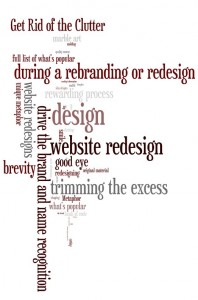 There’s nothing we like more than redesigning an old website to get it up to speed. There’s just something about taking a hunk of code you’ve been handed, molding, shaping, and cutting it until it looks like a polished work of marble art, and then handing it back to the client with a smile. It’s truly a rewarding process, but if you don’t stay up to date on what’s popular in the medium, you may quickly find your website redesigns looking just as old-fashioned as the original material! With that in mind, we’ve prepared a few of our choice thoughts on the matter below. So without further ado, check out our full list of what’s popular and useful in modern website redesign!
There’s nothing we like more than redesigning an old website to get it up to speed. There’s just something about taking a hunk of code you’ve been handed, molding, shaping, and cutting it until it looks like a polished work of marble art, and then handing it back to the client with a smile. It’s truly a rewarding process, but if you don’t stay up to date on what’s popular in the medium, you may quickly find your website redesigns looking just as old-fashioned as the original material! With that in mind, we’ve prepared a few of our choice thoughts on the matter below. So without further ado, check out our full list of what’s popular and useful in modern website redesign!
- Get Rid of the Clutter: For a while there, it looked like the trend was to cram as much information onto one page as possible, causing a lot of headaches for the reader, while still sending a lot of information down the pipe. However, those days are (almost) officially over, as we’re seeing more and more slim designs in the work place. With your next revision, try to cut out the material as much as possible, trimming the excess until only what’s important remains. The essence here is brevity, and if you have a good eye for it, we guarantee you the client will be screaming, “It’s modern!†at the top of their lungs.
- That Being Said, Get Big! However, we’ve also noticed another trend: Where images and graphics were once small, they’re now blowing up! So when minimizing the initial footprint of your design, now consider taking those photos laying about and blowing them up to full-page size. It’s hip, modern, and the perfect compliment to the modern single-page layout. If you can lay a text box or other element directly on top of these images, that’s an even more swell idea in our book.
- Have a Metaphor: Lastly, it’s a good idea to have some kind of metaphor riding underneath the design. Companies like Twitter are thriving because, despite the quality content, they’ve also got a unique metaphor (the Twitter bird and her tweeting chicks) that help to drive the brand and name recognition. This is essential, especially during a rebranding or redesign.


